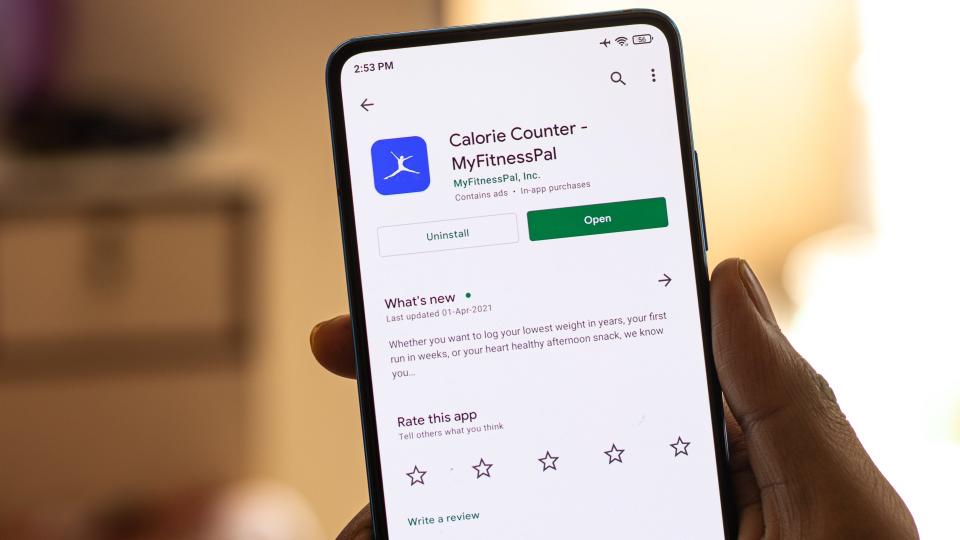I’m a personal trainer — here are 4 things I wish I'd known before I started counting macros

Any gym junkie or fitness fanatic will tell you (without you asking, probably) about “counting macros.” The subject often crops up around nutrition in fitness. Whether you’re an elite athlete, bodybuilder or just entering the gym for the first time, tracking macros remains a topic that looms large.
Macro tracking refers to monitoring your daily intake of macronutrients — protein, fats and carbohydrates — in grams and as a percentage of your overall calorie consumption.
While calorie counting is a popular method for balancing energy in versus energy out during the day (staying in a slight calorie deficit is how people typically lose weight), counting macros looks more at food quality and could help build lean muscle mass, improve body recomposition, fuel exercise efforts and tailor your diet towards sports performance goals.
So before you pick up your protein shaker and refuel, why not learn why you're doing it?
What are macronutrients?
The main dietary sources the body needs to function optimally are the macronutrients protein, carbohydrates and fats. You’ll also need micronutrients — vitamins and minerals — that come from your diet.
Protein supplies the body with amino acids, which act as building blocks for muscle growth and repair, providing four calories per gram; carbohydrates are the body’s main fuel source, breaking down into glucose to be used by the body for energy and containing four calories per gram; “good” unsaturated fats provide nine calories per gram, help absorb vitamins, maintain healthy hair and skin, provide insulation and promote healthy cell function. When the body has limited carbs for fuel, it can turn to fat as the next best source.
There's no magic number you can stamp on any of the macros. For example, how much protein you need to build muscle will depend on your body composition, goals, exercise schedule and refuelling efforts.

Tailoring macros helps your body get more of what it needs, especially when working toward a goal in the gym. Those building lean muscle mass need adequate protein intake, while long-distance runners may prioritize fueling with slow-release carbs.
Macro counting isn’t just for elite athletes required to dial into the quality, quantity and timing of their food. Many everyday exercise enthusiasts are keen to use apps that help track macros and calorie intake to align with gym goals.
As a trainer, I’m careful to suggest it to clients unless we’re working toward a specific goal and I’ve done my due diligence first. Generally, I don’t recommend counting calories, and although that isn’t exactly the same as tracking macros, there are crossovers and pros and cons for both.
Depending on the person, tracking can lead to restrictive and obsessive behavior, which doesn’t lend itself to building mental strength or creating a healthy relationship with food.
But for those who favor it, particularly bodybuilders or sportspeople, it’s an efficient, tried and tested way to achieve aesthetic or performance goals and help build a stronger relationship with food, fueling the body properly for workouts, deciding what to eat before a workout and choosing to train fed or fasted.
3 things I wish I had known before I started counting macros
Here’s what I’ve learned over the years from counting macros.
1. It's time consuming
I heard about macro counting before entering the fitness industry professionally, and I found it interesting, intense and very, very time consuming. At one stage, I spent more time diligently scanning and entering food into my macro counter and checking daily progress than enjoying the food in front of me. Looking back, I can’t believe I stuck at it for so long.
Thanks to handy tech, you don’t have to do the math to learn how to count your macros. First, you’ll use a macro calculator to input personal information like age, height, weight, activity levels, sex and goal weight to determine the daily recommended amount of carbs, fats, proteins and calories you “should” consume.
The calculator will ask about goals: do you want to lose weight, build muscle, or both? This determines whether you should aim for a calorie deficit — burning more calories than you consume to aid weight loss — calorie maintenance or ingesting more calories than you burn, which primes you for muscle growth.
Thanks to handy tech, you don’t have to do the math to learn how to count your macros.
Once you’ve locked these figures in, macro-tracking apps like MyFitnessPal allow you to input them as targets, along with goals, and scan consumed food or drinks into the app, which calculates and tracks nutrition for you. All you need to do is check your progress, but the tools available are extensive.
For some, scanning and inputting every morsel of food and sip of drink throughout the day is exhausting and takes away from the enjoyment of it. For others, it can help build awareness around eating habits. Personally, I reached a point when I cared more about measuring and logging my food than I did about eating it — which was when I waved goodbye to the app for good.
2. It's beneficial (for some)
We now know the recommended daily calorie intake, which sits between 1,600 and 3,000 calories according to the Dietary Guidelines For Americans, is reductive. While it provides a helpful guideline, your genetics, lifestyle, metabolism and unique gut microbiome are just some factors playing a vital role in how your body deals with nutrients from food and how much fuel you need.
We spoke to nutritionist Rhiannon Lambert who says, “Monitoring calories can help you reach the energy deficit needed to lose weight." So here’s the problem. Research like this study by the New England Journal of Medicine has found that “clinically meaningful weight loss” can result from a reduced-calorie diet regardless of macronutrient split. Meaning, that people might focus more on calorie quantity than quality.
There are benefits of counting macros. Firstly, we know it works. It can improve accountability, help people personalize their understanding and experience with food, and tailor it to their needs — especially those with a vested interest in fitness or who enjoy dealing with facts and figures.
Counting macros also builds awareness around the quality of nutrients. For example, a slice of toast with peanut butter and jelly could contain the same calories as a bowl of protein oats, but while both might help you hit your daily calorie goal, the oats better fit your macros — a great, healthy source of protein and complex carbs.
Food should be nourishing rather than only serving to hit targets. “Calculating and planning every meal down to the gram is not going to nourish your mind and body,” Lambert explains. “We also may not need the same amount of macros per day. Our needs constantly change.”

3. But it's not for everyone
I’ve seen macro tracking used for all sorts of goals, from cutting weight before a boxing match to increasing lean muscle mass in the gym or losing fat before a holiday. It can help people build a stronger understanding of nutrition, including energy consumption, food quality, portion control and how calories work, especially at elite level when food fuels exercise efforts.
For others, it feels restrictive. Research by Frontiers in Genetics found that yo-yo dieting (following a restrictive eating pattern followed by a period of overconsumption) can lead to weight gain over time.
Macro counting isn't part of the yo-yo dieting club, and many people who use the method long-term find ways to include the foods they love to fit with their macros. Trust me, there's a way to make Ben & Jerry's Cookie Dough fit if you want it enough. However, it's worth learning your unique relationship with food before trying it to ensure getting the balance right.
Some dietary guidelines might also be temporary under advice from medical professionals for those managing chronic health conditions. For example, those living with diabetes, gluten intolerance, a chronic gut condition, obesity, or similar may find speaking with a registered dietician, nutritionist, or physician the best way to manage their diet, and macro counting might be recommended in some instances.
4. There are other factors to consider
Alongside counting your macros, maintaining a healthy weight and hitting your goals comes down to how much you move throughout the day, aside from your dedicated exercise sessions or diet; this is called Non-Exercise Activity Thermogenesis (NEAT). Consider adding more movement to your day alongside regular exercise, which can bolster your energy-burning efforts.
Then, there’s your gut. We know that the more diverse your gut microbiome, the better. A healthy gut has been shown to improve immunity, digestion, mood, weight loss and metabolism. To support it, prebiotics, probiotics, plant-based foods and fermented products are a great way to increase diversity.
Next, think about the quality of your macros. Complex (slow-release) carbs like whole grains help sustain energy while fast-acting carbs like pastries provide an instant blood sugar spike, surge in energy levels and quicker drop-off. Unsaturated fats such as avocados and nuts provide the body with essential fatty acids and Omega 3, and natural sources of protein help to repair, maintain and build muscle and tissues while helping you feel full (I prefer natural sources as a priority, supplementing with protein shakes and powders if you're often on-the-go).
Is it worth tracking macros?

Yes, for anyone focusing on specific fitness goals or a health condition. If you know you have a challenging relationship with food already, I strongly recommend speaking to a qualified nutritionist, dietician, or physician for guidance tailored to your circumstances.
Most importantly, it’s about finding balance. Prioritizing the quality of your macros helps nourish and fuel the body properly, but restricting yourself from eating foods you enjoy could leave you feeling low, so factor in foods you love — even if they don’t fit your macros.
I (personally) avoid sticking too close to calorie targets that make me feel like I can't enjoy food, so remember to check in with energy levels, the nutritional content of your food and lifestyle factors first.


